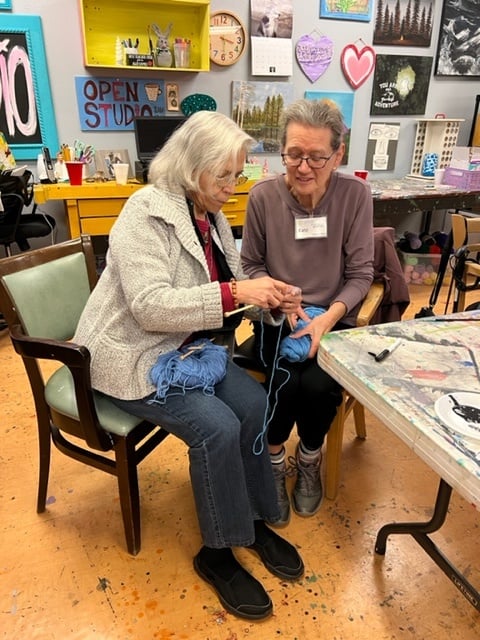Building an emotionally safe and positive environment plays a specific role in promoting and fostering lifelong learning during all stages of dementia. Our words carry a lot of weight to them, but our body language does a lot of the talking, too!

The Marbella International University Centre (MIUC) notes that verbal and non-verbal communication occurs simultaneously, with the latter being more revealing of what we actually think and feel. We can be intentional in the words that we speak, but our body language has the power to express something different. Therefore, by becoming more aware of our facial expressions, stature, and the tonality of our voices, we can utilize our body language to carry on conversations in ways that reinforce positive messaging.
Gesturing, for instance, is one method that can add more substance to conversations, according to the MIUC. Those with dementia might not always be able to tell you when they cannot see, hear, or understand something. Using hand gestures and acting out specific actions (i.e., pretending to throw a ball) could help form a bridge in situations where participants might not hear what was said but could hear when someone was talking.
Studies have also found that continuing to repeat these gestures will strengthen the reach of verbal communication. For instance, you can help gather and direct attention by pointing to specific objects as you speak. Ensuring that your actions complement what you are saying is also an effective way of producing a positive learning experience. For example, if you say you are delighted to be introducing a new activity, share that enthusiasm with a smile and an upbeat tone of voice.
Enforcing positive non-verbal communication is also of particular importance when working in groups. Researchers have described how body language can positively or negatively impact each participant’s level of enjoyment while learning in a class setting. In addition, they highlight the importance of care partners and facilitators starting each activity with a warm smile, welcoming everyone to the group, and encouraging participation as they work towards producing a friendly and healthy learning environment.
Family Caregiver Alliance suggests introducing an activity by breaking it down into smaller, easy steps. For example, you can kick off a session by stating that something wonderful is going to happen, then begin the direction by saying, “We are going to do three easy things.” Then, as you provide your instruction, demonstrate each step of the activity by working alongside your participants – and don’t be afraid to get your hands a little dirty!
Your participation will show those around you that you are interested in the activity. This shared interest will pique your participant’s curiosity and even entice them to want to share in the experience as well. As you work through the activity, make room for meaningful conversations by asking small, simple questions and responding by listening with your ears, eyes, and heart.
We recognize initiating and maintaining interest as one of the most common hurdles faced in engaging a person with dementia. As they lose their ability to communicate or understand what is happening around them, it becomes more likely for those with dementia to feel withdrawn. But, as their care partner, you have the power to help break this cycle! Your actions can speak louder than words, so share your energy with those around you and continue building positive learning environments!
EngAGE EnCOURAGE™ offers an easy-to-use e-learning platform designed for care partners wishing to get people learning, laughing, and creating. This sort of engaging communication treats people with cognitive impairment as valued individuals and improves their quality of life.
EngAGE EnCOURAGE™ provides a quality curriculum for resident or member programming at assisted living communities, adult day clubs, and memory care providers. Reach us via email or toll-free by phone at (602) 418-5196.
